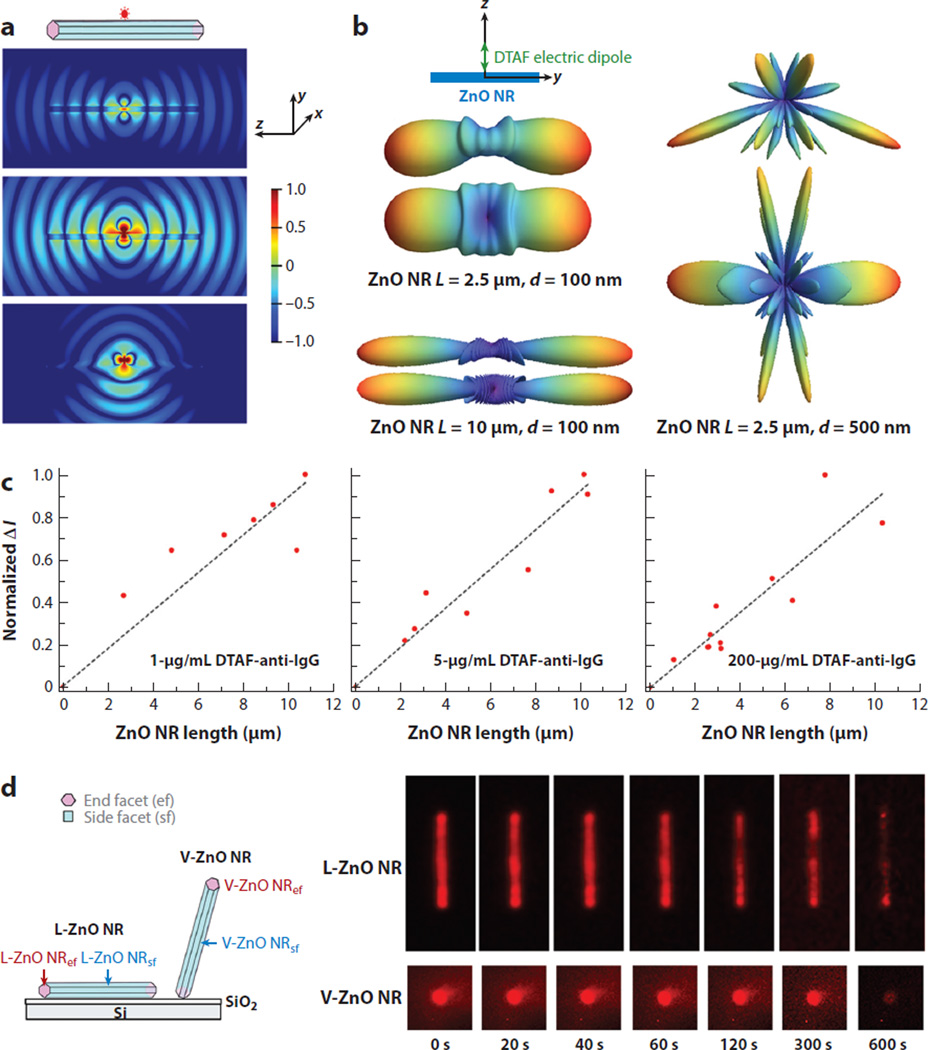Figure 6.
Factors governing the occurrence, degree, and magnitude of fluorescence intensification on nanorod ends (FINE). (a) Finite-difference time-domain simulations were carried out to obtain the radiation patterns from a single emitter radiating at 576 nm polarized along the x (top), y (middle), and z (bottom) directions. (b) The dimensional effect of ZnO nanorods (NRs) on FINE was evaluated by simulating far-field radiation patterns of a 517-nm electric dipole. A pair of far-field patterns is shown for each NR of the specified length (L) and width (d), where the top/bottom simulation corresponds to the spatial patterns observed from the z/x axis. (c) ZnO NRs of various lengths and widths were analyzed after treatment with three different concentrations of 5-(4,6-dichlorotriazinyl) aminofluorescein (DTAF)–antibovine IgG (anti-IgG). In all cases, the normalized ΔI value of (Iavg,NRef − Iavg,NRsf) indicated that the degree of FINE increased as the NR length increased. (d) When the spatial and temporal emission behavior of 1-µg/ml TRITC-anti-IgG on a lateral (L)-ZnO NR (top) and a vertical (V)-ZnO NR (bottom) was monitored in time-lapse fluorescence panels, the presence of the FINE phenomenon was qualitatively confirmed in all cases. The magnitude and degree of FINE were higher for vertically oriented NRs relative to laterally oriented ones. Figure adapted from Reference 51 with permission. Copyright 2015 Royal Society of Chemistry.

